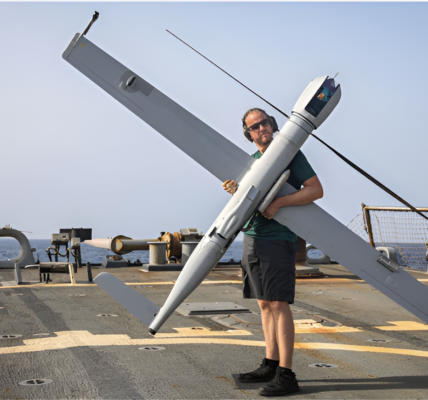
North Korea’s burgeoning nuclear-powered submarine program has recently made headlines, with reports from South Korean military and National Assembly sources confirming that construction is underway on the country’s first nuclear-powered vessel. Set to reshape the strategic landscape, these submarines could give North Korea a new, long-range naval power projection capability.
The revelation follows a January 2021 announcement by Kim Jong Un, chair of the ruling Korean Workers’ Party, indicating that the design phase for a nuclear-powered submarine had been finalized, with weapons and sensors already integrated. This move places North Korea among a select group of nations—currently just six—capable of deploying nuclear-powered submarines, which allow for extended operational endurance at sea, in stark contrast to the limitations of conventional diesel-electric powered vessels.
Strategic or Tactical? An Expert’s Perspective
A. B. Abrams, a leading expert on East Asian security and author of Surviving the Unipolar Era: North Korea’s 35-Year Standoff with the United States, suggests that this program may dramatically alter the nature of North Korea’s military capabilities. Abrams notes that while the conventional assumption is that these submarines will serve as a strategic deterrent, the possibility exists that they could instead be configured as attack submarines, a development that would have far-reaching consequences for U.S. military interests.
“Ballistic missile submarines, by design, are primarily for deterrence,” explains Abrams. “However, attack submarines offer far more versatility, enabling North Korea to conduct a range of operations below the threshold of full-scale nuclear war, including cruise missile strikes, special forces insertions, and anti-shipping operations.” This ability to project power globally would elevate North Korea’s position significantly, creating an entirely new capability for the country to project naval power across oceans.
The strategic utility of such attack submarines would be far broader than that of traditional deterrence platforms. In the event of a limited strike by the United States on North Korean targets, Abrams argues, a ballistic missile submarine’s role would be confined to a defensive response. In contrast, an attack submarine would allow for a much more flexible retaliatory capacity, with the potential for strikes on U.S. military bases or industrial targets located on American soil, including Guam or even the mainland United States.
A Step Toward Tactical Nuclear Balance
Abrams further suggests that North Korea’s potential nuclear-powered attack submarines could represent a key step in balancing the tactical capabilities of the two nations. In 2017, North Korea achieved strategic parity with the U.S. through its development of intercontinental ballistic missiles (ICBMs), but with its relatively limited ability to launch tactical strikes on distant U.S. targets, this gap has persisted. A nuclear-powered attack submarine, capable of launching precision strikes with both conventional and nuclear warheads, would bring North Korea closer to achieving tactical balance, further complicating any calculus for U.S. military action.
The technological advancements driving this submarine program align with recent breakthroughs in North Korea’s defense sector. Abrams highlights how the country has bridged previously significant gaps in military technology, citing examples such as the domestically produced Chonma 2 tank and Pyongae-6 air defense system. The development of a cutting-edge nuclear submarine would mark yet another leap forward in North Korea’s military capabilities, potentially aided by technology transfers from Russia, which has increasingly relied on North Korean support during its ongoing war in Ukraine.
A Historical Motivator: North Korea’s Strategic Thought
The historical context of North Korea’s military thinking also plays a crucial role in shaping this new strategic shift. North Korea’s memories of the Korean War—during which the U.S. extensively bombed the country, leaving millions dead and unable to retaliate against American soil—still heavily influence its approach to national security. The presence of a nuclear-powered submarine that could strike distant American targets, particularly on the U.S. mainland, would provide a tangible deterrent against perceived U.S. aggression, a long-standing strategic objective for Pyongyang.
Given the persistent threats of U.S. nuclear strikes over the past decades, including during the Truman, Eisenhower, Nixon, and Trump administrations, North Korea’s push for capabilities that could deter such attacks underscores the significance of these developments. The potential ability to retaliate against U.S. targets beyond the Korean Peninsula would represent a transformative shift in the regional and global balance of power.
Conclusion: A Turning Point in Regional Security
The construction of North Korea’s nuclear-powered submarine program signals a monumental shift in the country’s military capabilities. Whether used for strategic deterrence or as a versatile attack platform, these submarines will add a powerful dimension to Pyongyang’s ability to project force and challenge the United States and its allies. This development could mark a critical turning point in the longstanding conflict between North Korea and the U.S., further complicating the already volatile dynamics of East Asian security. As the world watches these advancements unfold, the implications for global stability and military strategy remain profound.




